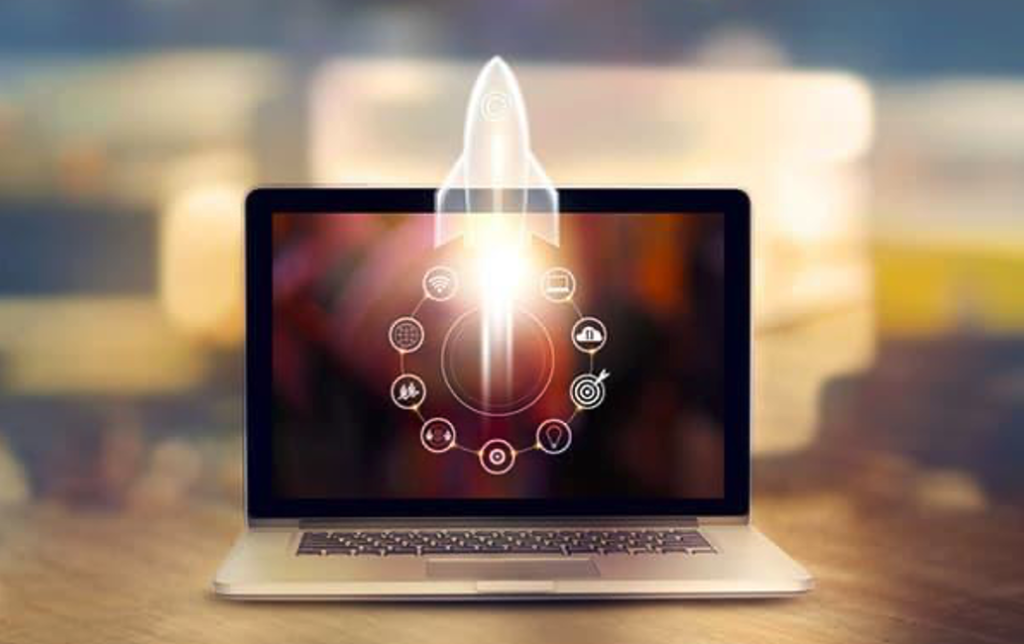A sluggish Windows PC can be frustrating whether you’re working, gaming, or browsing the web. Fortunately, you can significantly enhance your system’s speed and responsiveness with the right optimization techniques. This guide will walk you through essential steps to optimize your Windows PC for maximum performance.
1. Manage Startup Programs
🔹 Why It Matters
Too many apps launching at startup can slow down boot time and consume system resources.
✅ How to Fix It
- Open Task Manager: Press
Ctrl + Shift + Esc. - Go to the “Startup” tab: Here, you’ll see all programs that launch at startup.
- Disable Unnecessary Programs: Right-click on any unwanted app and select “Disable”.
🚀 Tip: Only disable programs you don’t need at startup (e.g., Skype, Adobe services, game launchers).
2. Clean Up Unnecessary Files and Bloatware
🔹 Why It Matters
Over time, junk files and unused applications clutter your storage, reducing performance.
✅ How to Fix It
- Use Disk Cleanup:
- Press
Win + R, typecleanmgr, and hit Enter. - Select your drive (usually C:) and click OK.
- Check unnecessary files and click “Clean up system files”.
- Press
- Uninstall Unnecessary Programs:
- Go to
Settings > Apps > Installed Apps. - Remove unused or pre-installed bloatware.
- Go to
🚀 Tip: Use third-party tools like CCleaner for deep cleaning.
3. Adjust Power Settings for Better Performance
🔹 Why It Matters
Windows’ default power settings prioritize energy efficiency, which can throttle performance.
✅ How to Fix It
- Open
Control Panel > Hardware and Sound > Power Options. - Select High Performance mode to maximize speed.
🚀 Tip: If you’re on a laptop, be aware that this mode may drain the battery faster.
4. Optimize Storage with SSD and Defragment HDD
🔹 Why It Matters
A solid-state drive (SSD) speeds up boot times and application launches compared to traditional HDDs. If you have an HDD, defragmentation is essential.
✅ How to Fix It
- For SSD Users:
- Ensure TRIM is enabled for optimal performance:
- Open Command Prompt (
Win + X > Command Prompt (Admin)). - Type:
fsutil behavior query DisableDeleteNotify - If it returns
0, TRIM is enabled.
- Open Command Prompt (
- Ensure TRIM is enabled for optimal performance:
- For HDD Users:
- Run Defragmentation:
- Open
Defragment and Optimize Drivesfrom the Start menu. - Select your HDD and click Optimize.
- Open
- Run Defragmentation:
🚀 Tip: Consider upgrading to an SSD if your PC still runs on an HDD.
5. Keep Windows and Drivers Updated
🔹 Why It Matters
Outdated software can cause slowdowns, security risks, and compatibility issues.
✅ How to Fix It
- Update Windows:
- Go to
Settings > Update & Security > Windows Update. - Click Check for updates.
- Go to
- Update Drivers:
- Use Device Manager (
Win + X > Device Manager). - Right-click on devices (Display adapters, Network adapters, etc.), then select Update driver.
- Use Device Manager (
🚀 Tip: Use tools like Driver Booster or check your manufacturer’s website for the latest drivers.
6. Disable Background Apps & Services
🔹 Why It Matters
Many apps run in the background, consuming RAM and CPU power.
✅ How to Fix It
- Disable Background Apps:
- Go to
Settings > Privacy > Background apps. - Toggle Off unnecessary apps.
- Go to
- Disable Unnecessary Services:
- Press
Win + R, typemsconfig, and hit Enter. - Go to the Services tab, check “Hide all Microsoft services”, then disable unnecessary services.
- Press
🚀 Tip: Do not disable essential services like Windows Update or Security.
7. Use a Lightweight Antivirus
🔹 Why It Matters
Heavy antivirus software can slow down your system, especially on older PCs.
✅ How to Fix It
- Use Built-in Windows Defender (Windows Security) instead of third-party antivirus.
- Run Malware Scans using Malwarebytes to remove hidden threats.
🚀 Tip: Avoid running multiple antivirus programs simultaneously.
8. Upgrade Your Hardware (RAM, SSD, GPU)
🔹 Why It Matters
Sometimes, software optimization isn’t enough. Upgrading key hardware components can provide a huge performance boost.
✅ What to Upgrade
- Upgrade to an SSD if you’re still using an HDD.
- Increase RAM (8GB+ recommended for smooth multitasking).
- Upgrade GPU if you’re into gaming or video editing.
🚀 Tip: Check your motherboard’s compatibility before upgrading.
Conclusion
By following these Windows optimization tips, you can significantly improve your PC’s speed and performance. Regular maintenance, software tweaks, and occasional hardware upgrades will keep your system running like new.
💡 Have you tried these methods? Share your experience in the comments below! 🚀


